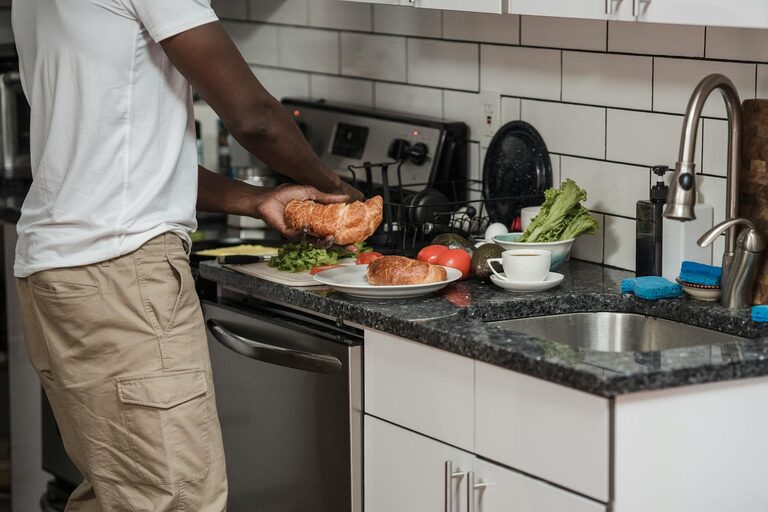
Creating a weekly meal plan can transform your cooking routine, reduce stress, and help you make healthier food choices. Whether you’re cooking for yourself, your family, or roommates, a clear plan saves time, limits food waste, and eases decision-making.
In this post, we’ll walk through easy steps to create a simple weekly meal plan that suits your lifestyle and tastes. Don’t worry—it doesn’t have to be complicated or time-consuming!
Why Plan Your Meals Weekly?
Before diving into the how, it’s helpful to understand the benefits of meal planning:
– Saves Time: Knowing what you’ll cook helps you avoid last-minute trips to the store.
– Reduces Stress: No more “What am I making for dinner?” dilemmas.
– Improves Nutrition: Planning helps you balance your meals and incorporate variety.
– Saves Money: Buying in bulk and avoiding takeout cuts down food expenses.
– Limits Food Waste: Using ingredients across meals means less spoilage.
Step 1: Assess Your Week Ahead
Start by reviewing your weekly schedule to identify busy days, meals eaten outside, or days to keep simple.
– How many breakfasts, lunches, and dinners will you need to prepare at home?
– Do you have any events or plans that affect mealtime?
– Are you cooking just for yourself or for multiple people with different preferences?
Answering these questions will help tailor your meal plan realistically.
Step 2: Choose Your Recipes
Opt for meals that are easy to prepare and use ingredients that overlap where possible. Here are a few ideas:
– Breakfast: Overnight oats, smoothies, scrambled eggs with veggies.
– Lunch: Salads, sandwiches, grain bowls, leftovers.
– Dinner: Stir-fries, pasta, sheet pan meals, soups.
Take some time to gather 5-7 recipes you like and feel comfortable making. You can rotate these weekly or try new ones each time.
Step 3: Create a Meal Template
Layout your week with meal slots filled in by the recipes you chose. Use a simple table or printable planner:
| Day | Breakfast | Lunch | Dinner |
|———–|———————-|———————-|———————|
| Monday | Overnight oats | Chicken salad | Veggie stir-fry |
| Tuesday | Smoothie | Leftover stir-fry | Pasta with tomato |
| Wednesday | Scrambled eggs + toast | Tuna sandwich | Sheet pan chicken |
| … | … | … | … |
This visual helps you get organized and adjust meals easily.
Step 4: Make a Grocery List
From your meal plan, list all required ingredients, checking what you already have at home. Organizing the list by category (produce, dairy, proteins, pantry) streamlines shopping.
Tip: Stick to recipes that use similar ingredients to minimize waste and cost.
Step 5: Prep Ahead When Possible
To save time during busy weekdays, prep some ingredients in advance:
– Chop vegetables and store in containers.
– Cook grains like rice or quinoa in batches.
– Marinate proteins or prepare sauces.
– Portion snacks or breakfast items.
A little prep can make cooking faster and more enjoyable.
Tips for Successful Meal Planning
– Be Flexible: Don’t stress if plans change. Swap meals around as needed.
– Start Small: If weekly planning feels overwhelming, try planning just dinners or lunches.
– Use Leftovers: Plan some meals to create extra portions for next-day lunches.
– Keep it Simple: Focus on easy recipes with few ingredients, especially when starting out.
– Include Variety: Rotate different proteins, veggies, and grains to keep meals interesting.
Tools to Help You Plan
Several tools can assist in meal planning:
– Apps: Apps like Mealime, Paprika, or AnyList help organize recipes and shopping lists.
– Printable Planners: Download or create weekly meal plan templates.
– Cookbooks or Blogs: Use reliable sources for recipe inspiration.
Final Thought
Creating a simple weekly meal plan doesn’t have to be complicated or strict. By taking time once a week to plan meals, you set yourself up for easier cooking, healthier eating, and less stress. Start with small steps, and soon it will become a helpful part of your weekly routine!
Happy cooking!
